

Waldorf Graduates Pursue Meaningful Careers
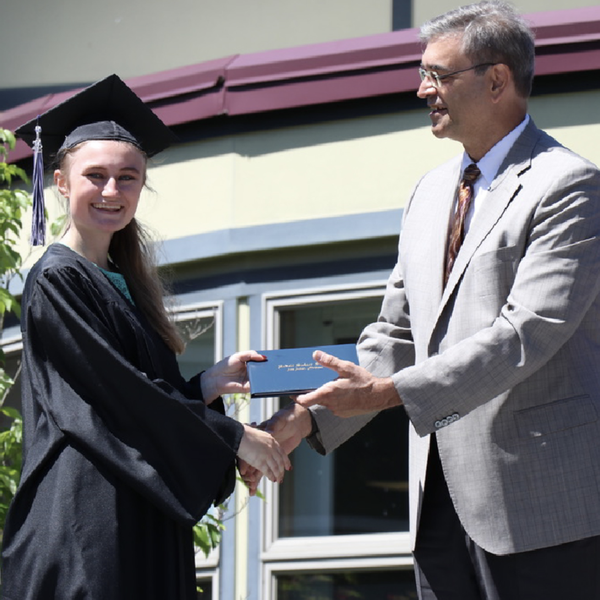
Will My Child Succeed After Waldorf High School? The Research Says Yes
Choosing a high school is a critical decision, and parents often wonder: Will this education prepare my child for college, career, and life?
For families considering Waldorf high schools, this question is especially relevant. With experiential learning, seminar-style discussions, and an interdisciplinary curriculum, can Waldorf truly equip students for fields like medicine, law, technology, and business?
Decades of research say yes.
Waldorf Graduates Excel in Higher Education and Careers
A 60-year study (Survey of Waldorf Graduates, Phase II, Mitchell & Gerwin, 2007) found that:
- 94% of Waldorf graduates attend college.
- 42% major in science-related fields—more than double the national average.
- Many earn advanced degrees in medicine, law, engineering, business, and the arts.
- Alumni thrive in fields ranging from finance and research to entrepreneurship and sustainability.
Waldorf Alumni Spotlight: Science in Action
After earning a degree in Earth Systems Engineering from the University of Michigan, Gavin Chensue ('06) joined the NOAA Commissioned Officer Corps, leading critical climate studies worldwide.
"Steiner education gave me a taste of everything. When I needed direction in college, I remembered how much I loved studying weather and geology—and that led me to where I am today." - Gavin Chensue (RSSAA '06), Research Engineer at SRI International, Former NOAA Corps Officer
His story highlights how Waldorf graduates succeed in STEM, combining curiosity and real-world problem-solving to make a global impact.
Read the full studies:
- Survey of Waldorf Graduates, Phase II: https://www.waldorfeducation.org/research
- Into the World Study: https://www.waldorfeducation.org/graduate-outcomes
What Makes a Waldorf Education So Effective?
Contrary to the belief that test-driven education leads to success, research shows that employers and universities highly value graduates who:
✔ Think critically and independently
✔ Communicate clearly and persuasively
✔ Collaborate effectively
✔ Solve complex problems
✔ Adapt to a changing world
These are precisely the skills Waldorf high schools cultivate.
1. Depth Over Memorization: Lifelong Knowledge Retention
Rather than rote memorization, Waldorf fosters deep understanding:
- History is explored through primary sources and narratives.
- Science emphasizes hands-on experiments and independent research.
- Mathematics focuses on real-world application.
- Literature and philosophy encourage analytical discussions.
One employer noted:
“Waldorf students don’t just look for the right answer—they explore the why and how behind complex issues.”
2. Seminar-Style Learning Develops Exceptional Communicators
Waldorf emphasizes oral presentations, debates, and collaborative discussions, preparing graduates for leadership roles in law, finance, business, and medicine.
Dr. Ilan Safit, co-author of *Into the World*, states:
“We consistently hear that Waldorf graduates excel at teamwork and leadership. Their ability to articulate complex ideas is a major asset.”
A study from Da Vinci Waldorf School found that Waldorf students select careers based on values and passion rather than prestige or income.
Final Thoughts: The Research Speaks for Itself
Professors and employers highlight Waldorf graduates’ intellectual curiosity and ability to think independently.
With strong college attendance rates, success across multiple professions, and the skills needed to navigate a complex world, one thing is clear:
Waldorf graduates don’t just succeed—they thrive.
Professors and employers highlight Waldorf graduates’ intellectual curiosity and ability to think independently.
With strong college attendance rates, success across multiple professions, and the skills needed to navigate a complex world, one thing is clear:
Waldorf graduates don’t just succeed—they thrive.
Read more on Waldorf Graduates
The Joy of a Phone-Free School: How Our Students Thrive Without Screens
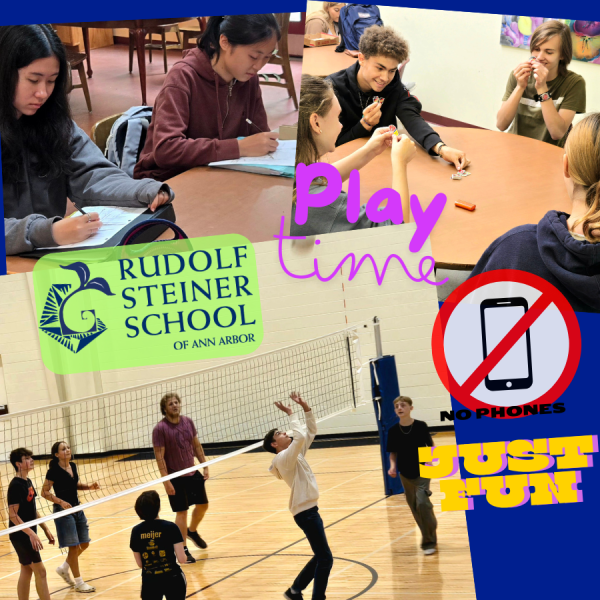
The Joy of a Phone-Free School: How Our Students Thrive Without Screens
Imagine a typical school day where students, between classes and during breaks, are glued to their smartphones—scrolling through social media, playing games, or texting. Conversations are sparse, eye contact is minimal, and the vibrant energy of youthful interaction seems subdued. Now, contrast this with a school environment where smartphones are set aside: students engage in lively face-to-face discussions, participate in spontaneous games, and immerse themselves fully in classroom activities without the constant pull of notifications. This is the reality we’ve cultivated at Rudolf Steiner School of Ann Arbor, embracing a phone-free policy that fosters genuine connections and holistic development.
The Deeper Engagement of Phone-Free Education
At our school, we’ve observed that removing smartphones from the school day does more than just eliminate distractions—it rekindles a deeper, more meaningful engagement among students. Freed from screens, students rediscover the joy of direct communication, collaborative problem-solving, and hands-on learning. This environment aligns seamlessly with the principles of Waldorf education, emphasizing experiential learning and nurturing the whole child.
We Are Phone-Free, Not Tech-Free
While our school maintains a phone-free environment during school hours, we are not devoid of technology. In fact, our curriculum incorporates technology in age-appropriate ways to ensure students are prepared for the digital world:
• Middle School: Students are introduced to computers and the internet in an intentional way that supports learning. Additionally, our middle school robotics club fosters interest in technology and engineering through hands-on projects. https://www.steinerschool.org/programs/extracurricular-activities.cfm
• High School: Our state-of-the-art computer lab facilitates courses in coding, digital literacy, and other computer science subjects. We also have an active high school robotics club where students collaborate on competitive projects that develop real-world problem-solving skills. https://www.steinerschool.org/about-us/waldorf-education.cfm
Many of our graduates go on to thrive in technology fields, excelling in computer science, engineering, and data analysis. Research shows that Waldorf graduates develop strong interdisciplinary thinking skills that prepare them for success in fields that require both creativity and technical expertise.
Leading the Way in Ann Arbor
Our commitment to a phone-free school day positions us as pioneers in the Ann Arbor educational community. While some other local schools have implemented partial restrictions, our comprehensive approach ensures that students remain unplugged throughout the day—including breaks and transitions between classes.
Several Ann Arbor schools are recognizing the value of limiting phone use:
• Forsythe Middle School and Tappan Middle School both require students to keep phones in lockers during school hours. https://forsythe.a2schools.org/our-school/cell-phone-policy, https://tappan.a2schools.org/our-school/cell-phone-policy
• Huron High School has introduced classroom phone storage policies in its Mathematics and English departments to help students stay focused. https://thehuronemery.com/9731/news/cell-phone-use-teacher-led-procedures-to-enrich-student-experience/
The Transformative Power of Disconnecting
The shift to a phone-free environment has yielded profound benefits:
• Enhanced Academic Focus: Without the allure of smartphones, students engage more deeply in lessons, leading to improved comprehension and retention.
• Strengthened Social Bonds: Face-to-face interactions during breaks and collaborative projects foster authentic relationships and empathy among students.
• Improved Mental Well-being: Reducing screen time has been linked to decreased anxiety and stress, allowing students to be more present and mindful.
Embracing a Connected Future Without Phones
As more schools recognize the value of limiting smartphone use, it’s evident that this movement is not about restricting technology but about reclaiming the essence of human connection and focused learning. By leading the way in this initiative, Rudolf Steiner School of Ann Arbor not only adheres to the foundational principles of Waldorf education but also prepares students for careers in STEM, the arts, and beyond.
We invite families seeking a nurturing, distraction-free educational environment to join us in this journey, where students can truly engage with the world around them and develop into well-rounded individuals.
Explore the experiences of other schools with phone-free policies:
• “New data reveals shocking trend since school mobile phone ban”
- “The big smartphone school experiment”
https://www.thetimes.co.uk/article/inside-schools-ban-smartphones-6knb8qtfc
- “Cell phones hinder classroom learning. Texas should tell school districts to lock them up”
- "Waldorf Schools are Media Literacy Role Models"
https://www.steinerschool.org/about-us/waldorf-schools-are-media-literacy-role-models/
The Power of Hands-On Science Education
Research shows that hands-on learning is extremely effective for students of all ages, particularly when it comes to science education. Waldorf Education employs an experiential approach in all subjects, especially in science. Students learn through observation and experimentation, rather than just memorizing formulas. This engages the senses and encourages critical thinking and problem-solving, which fosters wonder, curiosity, and a deeper understanding of scientific phenomena.
Learning about science through listening to lectures and reading about it, though valuable, isn’t always enough to truly engage students. Learning by doing science through hands-on science activities and experiments lets students see what they’ve learned in action and develop a deeper understanding of the subject. Hands-on learning is just another way to refer to learning by doing. Allowing students to discover more about scientific concepts through hands-on science activities, experiments, and projects is a proven way to increase engagement and academic achievement.
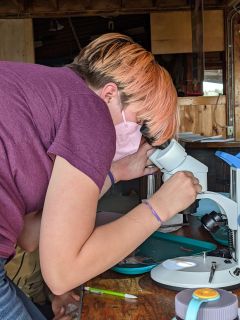 A study done by the Canadian Center of Science and Education found that children can learn mathematics and sciences effectively even before being exposed to formal school curriculum if basic mathematics and science concepts are communicated to them early using activity-oriented (hands-on) methods of teaching. Mathematics and science are practical and activity oriented and can best be learned through inquiry (Okebukola in Mandor, 2002) and through intelligent manipulation of objects and symbols (Ekwueme, 2007). The study looked at the impact of a hands-on approach on students’ academic performance and the students’ opinion about this activity-based methodology and showed positive improvement in both the students’ performance and participation in mathematics and basic science activities and willingness on the part of the teachers to use hands-on approaches in communicating mathematical and scientific concepts to their students.
A study done by the Canadian Center of Science and Education found that children can learn mathematics and sciences effectively even before being exposed to formal school curriculum if basic mathematics and science concepts are communicated to them early using activity-oriented (hands-on) methods of teaching. Mathematics and science are practical and activity oriented and can best be learned through inquiry (Okebukola in Mandor, 2002) and through intelligent manipulation of objects and symbols (Ekwueme, 2007). The study looked at the impact of a hands-on approach on students’ academic performance and the students’ opinion about this activity-based methodology and showed positive improvement in both the students’ performance and participation in mathematics and basic science activities and willingness on the part of the teachers to use hands-on approaches in communicating mathematical and scientific concepts to their students.
What Is Hands-On Science?
Hands-on science can be defined as students getting their hands on materials, performing experiments, exploring phenomena, and trying out ideas. According to research, hands-on science usually involves “physical materials to give students first-hand experience in scientific methodologies” but can also include virtual labs. Labs, experiments, and projects are all potential hands-on science activities.
Why Hands-On Learning Is Important in Science
Hands-on learning is more than just a way to get students to experiment with science equipment or be immersed in a virtual world. Also, hands-on learning does more than bring fun to learning. This approach is proven to increase student engagement and understanding of scientific concepts.
Hands-on learning can also connect to inquiry-based learning in science, another teaching approach that’s proven to increase student engagement. Inquiry-based science instruction encourages students to ask questions they are interested in and investigate those questions. Hands-on science is one of many ways students can explore inquiries, whether the procedure is designed by the teacher or student. Let’s delve into the additional benefits of hands-on learning in science.
Benefits of Hands-On Learning in Science
Increases Retention: Active learning, such as through hands-on activities, has been proven to be effective at promoting retention. When students apply what they’ve learned in the classroom through hands-on science experiments and activities, students can better understand concepts.
- Improves Performance on Assessments: Research from the University of Chicago shows that hands-on science can improve student outcomes. Participating in the learning process through learning by doing helps students forge a deeper understanding of the scientific concepts taught in class.
- Provides a Sense of Accomplishment: Teachers have recognized that hands-on science provides students with a sense of accomplishment. At the end of a hands-on activity or experiment, students can see the immediate results of their learning. Learning new ideas can take a long time, but when the learning is hands-on, students reach a clear stopping point and can look back at what they did.
- Supports Students with Learning Barriers: Hands-on learning is a proven way to support students with learning barriers, such as multilingual learners and students with autism. Research has shown that students who are just beginning to learn English can benefit from visual resources and hands-on activities that help them understand new words and concepts in English. Additionally, research has shown that hands-on learning can enhance the learning process for students with autism.
- Develops Critical Thinking Skills: Overall, hands-on learning develops students’ critical thinking skills. Through doing hands-on activities and experiments, students have the chance to connect to and apply what they’ve learned in class to complete their projects.

Waldorf Education Provides A Foundation for Success
Many employers seek specific skills in their potential employees, such as leadership, effective communication, adaptability, teamwork, and creative problem-solving. Waldorf Education stands out in preparing children with these crucial skills through a hands-on, experiential curriculum that covers a wide range of academics and arts. This approach helps students become confident, creative, adaptable, and able to connect well with others. Waldorf Education doesn't solely prepare graduates for higher education; it equips them for success in any career they choose.
According to Indeed.com's Career Guide, while there are particular skills needed for each industry and job, there are also core competencies that span across all professions. These are considered key employability skills and are many of the same skills cultivated in Waldorf classrooms from kindergarten through high school.
This video was originally published on the Indeed Career Guide. Click here for the full articleTop 11 Skills Employers Look for in Job Candidates.
Integrating Science and Art with a Sense of Place: The Waldorf Senior Zoology Trip
Originally published in the Spring 2023 Renewal Magazine
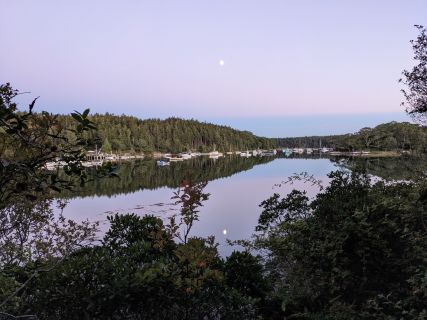 The sun has set, and the sound of the surf is heard just outside this empty wooden building. One hundred Waldorf seniors on this year's trip are out at the ocean's edge on the star-lit beach making ablution. They cleanse their hands, feet, and face in the cold ocean water, purify and calm their minds and then quietly open their senses to the nature of this island they will inhabit this week.
The sun has set, and the sound of the surf is heard just outside this empty wooden building. One hundred Waldorf seniors on this year's trip are out at the ocean's edge on the star-lit beach making ablution. They cleanse their hands, feet, and face in the cold ocean water, purify and calm their minds and then quietly open their senses to the nature of this island they will inhabit this week.
Slowly they re-enter the Kelp Shed, most holding the silence they were asked to keep. The room is dark, but a fire crackles loudly in the stone fireplace of this rustic, homey shed that serves as lodge for the summer campground. The rhythmical strumming of a guitar begins as the teachers sing a chant that has started each of these trips. "The earth ... the air. .. the water. .. the fire. .. return, return, return, return." As the music makes space, students join along singing, tentatively at first, but with growing confidence. Then silence. One teacher asks the group to imagine a picture of the quality of earth, and how it shapes this place and our lives. The rhythm of chant, silence, and picturing continues weaving through all four elements. Then silence. As the evening ends, the students and teachers file out to walk back to their campsites together. Another year of the senior zoology trip has begun.
Waldorf science education is rooted in a phenomenological approach. This means that observing phenomena is the key first step. Equally important is the reflective aspect of lessons where teacher and students grapple with previously made observations to come to meaningful relationships. We strive not just to fill the students with facts, but to awaken their capacities for observation, thinking, and artistic expression. Through engaged thinking, students are in the true process of "doing science," not just learning what other people have discovered. When taught well, science lessons awaken an interest in the world and in thinking more deeply about it. Doing this in the novel environment offered at Hermit Island on the Maine coast provides a capstone experience in the natural sciences. The artistic workshops connect the artistic realm to the scientific experience. Paintings, poetry, and observational drawings of marine invertebrates created by students in their field notebooks provide a true integration of art and science.
Student response to the trip has been enthusiastic. An international student from Ann Arbor told me. "I've seen all of the marine animals on TV. I felt like I knew everything about them. But when I interacted with them in the tide pools and observed the live animals under the microscope, I realized that I didn't really know anything. Now, I actually know them." Another student wrote a typical reflection about the week "I am tremendously grateful for this past week's endless opportunities. growth experiences, and lessons." Over the years, many have identified this as being a favorite experience of senior year.
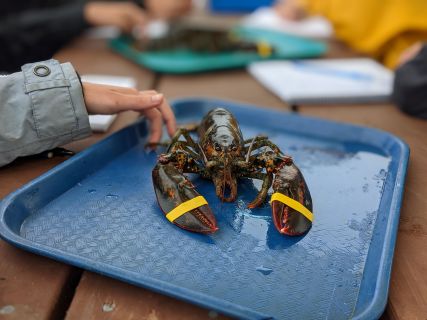 Recently, I had a conversation with Edward Edelstein, trip founder. His love for marine biology began while tide pooling and snorkeling for abalone on the coast of California as a high school student. As a biology teacher at Ontario's Toronto Waldorf School in 1993, Edelstein wrote a letter to all Waldorf High School biology teachers east of the Rocky Mountains proposing a senior trip to study marine zoology at Hermit Island, where he had vacationed with his family. He got only one positive response. Andy Dill from the Kimberton Waldorf School said he would give it a try and the first Hermit Island trip was launched with two schools in the fall of 1994.
Recently, I had a conversation with Edward Edelstein, trip founder. His love for marine biology began while tide pooling and snorkeling for abalone on the coast of California as a high school student. As a biology teacher at Ontario's Toronto Waldorf School in 1993, Edelstein wrote a letter to all Waldorf High School biology teachers east of the Rocky Mountains proposing a senior trip to study marine zoology at Hermit Island, where he had vacationed with his family. He got only one positive response. Andy Dill from the Kimberton Waldorf School said he would give it a try and the first Hermit Island trip was launched with two schools in the fall of 1994.
Year by year, attendance grew. At its pre-COVID peak there were 17 schools and over 240 students attending over two weeks. Over the past quarter century, several thousand Waldorf seniors have participated in this unique experience.
Zoology has always been at the heart of the trip, not just in the scientific work, but also in such details as the subjects of artistic projects, names of lab groups, and orchestration of evening campfires. Each day, one of the key invertebrate animal phyla (mollusks, annelids, arthropods, and echinoderms) forms the topic for the main lesson presented by collaborating teachers from each school.
Our study is deepened during the daily tide pool, microscope, and ecology labs, which are balanced by artistic workshops. Tidal rhythms sometimes require pre-dawn marches to the rocky shore so the students can experience the tide pools at a 6:00 a.m. low tide. These activities encourage students to enter genuinely into the context in which the marine invertebrates thrive. Experiencing them in their environment is key to understanding these animals. Hermit Island, with its unusual diversity of habitats, allows us to experience not only the animals in the context of their homes, but the amazing beauty of nature on this Maine coast.
An alumna of the class of 2013 recently shared the following reflections from her trip 10 years ago. "Hermit Island was a huge trip for me. I had never seen an ocean until we pulled up to Hermit Island. That alone was life changing. I had always wanted to experience being by an ocean so close to that expanse of water that is wild and calming and vast. [The trip] opened the senior year in such a unique way. It set that school year apart, making it special from the beginning. It allowed us to connect with people from other Waldorf schools. It allowed us to really bond as a group, away from the rest of the school. I don't have a single bad memory from that trip. I remember it in music, in the book whose author came to speak that I immediately bought at home, in sunshine, mud, pine trees, porcupines fighting in the trees, feeling free. I remember sitting alone on a cliff on our reflection morning and feeling so happy in that place.”
The opening evening ablution and elements circle sets the tone for the week. Sitting at the computer reflecting on the trip, the simple chant echoes on in me. "The earth, the air, the water, the fire, return, return, return, return.” These four elemental qualities contain deep wisdom. When I think of Hermit Island, the pictures of those qualities arise in me: sand, rock, and mud beneath our feet as we explore the different ecosystems; wind raising the surf and bringing the freshness of the ocean's salty water; cold tide pools, home to periwinkles, sea urchins, tunicates, crabs, and sea stars; the fiery sun warming us in the early morning's chill; the crackle of the evening's campfire, calling us to share and listen.
If you ask one of the students who attended the trip, “What happened in Maine?” you may get many answers, but key among the themes I have found are transformation, connection, joy, and amazement. We will continue sharing this experience with other Waldorf students and teachers as we return for another trip in September 2023.
.jpg/PXL_20210913_144803431(1)__427x320.jpg)
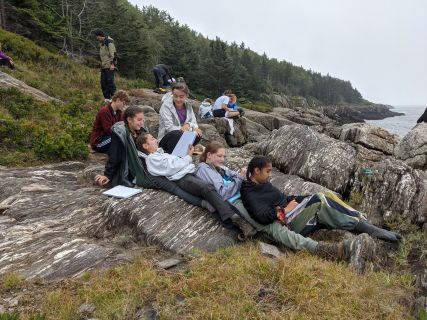
Steiner School Waboba Experiment
Originally Published in the Waboba Journal
Earlier this year, Noelle Frerichs, a physics teacher at Rudolf Steiner High School in Ann Arbor, Michigan, reached out to us about wanting to get her hands on Waboba Pro Balls for an upcoming classroom experiment she was doing. The experiment would involve throwing balls up in the air to calculate the height of each throw using knowledge of the speed of free fall. At first we offered to send Moon Balls since they bounce super high, but Noelle advised it was best to stick with the Waboba Pro balls to get the desired results. (Moon Balls would hit the ceiling in the gym, which would make it problematic for the calculation. Naturally.)
 You see, Noelle was planning a series of labs for her 10th grade physics (mechanics) class, where the students discover the acceleration of objects in free fall and learn to calculate the speed and height of a projectile. She thought of the gel Waboba balls because her dog has the pet version - the Waboba Fetch (she has 4, a true furbobian). Noelle knew her students would feel safer trying to catch soft Waboba balls over a hard softball, and others would feel safe with balls flying over their heads too. Plus, they could do the experiment in the gym if needed, and the Pro balls would be heavy enough to get good height, minimizing the effect of air resistance, which would skew their results.
You see, Noelle was planning a series of labs for her 10th grade physics (mechanics) class, where the students discover the acceleration of objects in free fall and learn to calculate the speed and height of a projectile. She thought of the gel Waboba balls because her dog has the pet version - the Waboba Fetch (she has 4, a true furbobian). Noelle knew her students would feel safer trying to catch soft Waboba balls over a hard softball, and others would feel safe with balls flying over their heads too. Plus, they could do the experiment in the gym if needed, and the Pro balls would be heavy enough to get good height, minimizing the effect of air resistance, which would skew their results.
After we sent Noelle some Waboba Pro Balls on the house (we love our teachers), she kept us posted about the experiment and answered some of our other questions too. We hope Noelle's story inspires other teachers to bring Waboba into the classroom to keep life and learning fun!
When/how did you first discover Waboba?
I first discovered Waboba in a small outdoor equipment store in Northport, MI. They sold the Waboba balls that you can bounce across the water and I bought one for my kids, then I later bought the set for dogs. My dog loves that ball, and it’s the only ball she will play with and chase! It’s also the way we get her in the water in the summertime.
How did your students respond to the experiment?
The students enjoyed throwing the Waboba balls as high as possible. They’re amazing because they’re soft but have a good weight to them, so they easily move through the air and can go very high. The students used timers to measure how long the balls were in the air in order to later calculate how high they could throw. Some students were throwing the balls over 50 feet into the air, but there were a few who were almost afraid to throw them and only tossed them about 7 feet high. They had to be encouraged to really throw them!
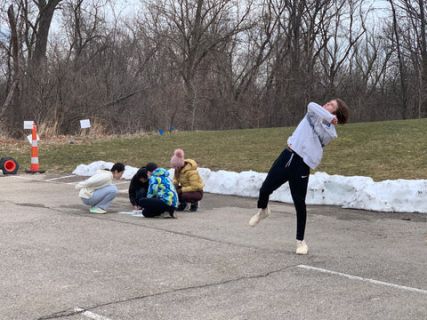 Any funny stories to share from the lesson?
Any funny stories to share from the lesson?
One of the students threw a ball so high that it went onto the roof of our gym. It’s still there because we don’t have a ladder high enough to get it down!
How is Steiner School different from other schools?
Something that sets Steiner (a Waldorf school) apart is that we work hard to meet students where they are developmentally. This means that in the preschool years the students’ time is primarily spent playing, to develop a healthy imagination, body and senses, as well as doing meaningful and fun work such as cooking and baking. They also hear many stories to foster the formation of mental pictures which later supports reading comprehension. In the lower grades the students transition from a more movement-based curriculum to learning about nature, cultures and sciences primarily through stories to which they connect deeply. The upper grades and high school are where the curriculum shift to more deeply intellectual topics and conversations around culture, literature and the sciences. Throughout our school the students are given a balanced curriculum including subjects lessons, arts, music and movement. Our student-centered approach also cultivates and establishes substantial relationships and helps develop social skills and moral character, as well as, offering a college-prep education.
How do you keep your students engaged in a tech-heavy world?
Something that sets Steiner apart is that we base our science lessons on experiences instead of textbooks or videos. In our science classes, students always start with hands-on experiences. Therefore, the sciences lessons begin in the laboratory and in the field. Observation and experimentation of the phenomena is the basis for the development of the laws and theories of modern science. The result is that we are educating the students to think and discover for themselves, which will serve them particularly well in the sciences but will also be beneficial no matter what their future career will be.
Favorite memory as a teacher:
I love seeing the growth of the students from 9th grade through 12th grade. Students come to us in 9th grade, some with many worries and insecurities and others with an overabundance of confidence. They are often very social but can be lacking in organizational skills, responsibility and social compassion. They grow and change so much from 9th to 12th grade and develop into caring and compassionate young adults.
Favorite memory as a student:
I loved chemistry and physics classes as a student. I remember the day my physics teacher did a demonstration where two balls were simultaneously released from the same height. One was launched horizontally and the other was dropped vertically. I was shocked that they hit the ground at the same time. I really thought the one that was launched horizontally would have taken longer to hit the ground. In retrospect, I would have had a hard time believing my teacher if he told us they would hit the ground at the same time without showing us that demonstration. Instead of focusing on questioning the truth of the statement that they would land at the same time, seeing the demonstration first engaged and interested me, and caused me to focus on questioning why they landed at the same time.
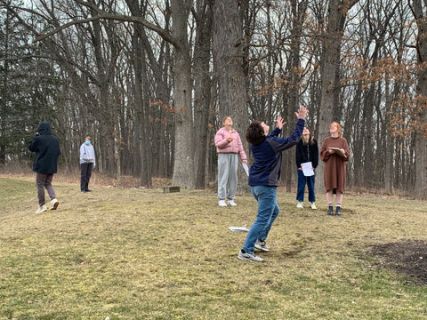 How do you Keep Life Fun with your students?
How do you Keep Life Fun with your students?
Because we start every topic with a demonstration or lab experience, the classes are naturally a lot of fun. The students enjoy hands-on learning. We also have engaging discussions in order to understand the phenomena that we investigate. The students enjoy sharing their thoughts and ideas, and it brings a social component to the lessons that would be absent if I was just lecturing. One day the students sat on scooters and raced through the gym to experience relative velocity. Another day I led them in an organized game of tug of war, an experience which led us to discuss vectors and the idea of equilibrium. There are so many examples of experiences the students have in the sciences, in chemistry, physics and the life sciences, throughout their four years in the high school. In their senior year the students travel to Maine as part of their Zoology lessons. We meet up with students from other Waldorf schools from across the country to study the coastal land and the abundance of life in the tide pools.
Did you have a favorite teacher when you were younger that inspired you to teach?
When I was in high school, I had no inclination to ever teach. I was very shy and wasn’t comfortable being in front of a room. My speech class in college was terrifying. I went to school to be an engineer and worked in the automotive industry for 13 years. Although I enjoyed my co-workers and many aspects of engineering work, I felt drawn to do something more meaningful. I’d had children by that point and had discovered the local Waldorf school. I was impressed by the curriculum and the way it built compassion, interest, imagination and logical thinking. Having spent 13 years in engineering, I could directly see the connections between the skills being built in the school and the skills needed for a successful career in engineering.
What inspired you to teach physics?
In order to truly understand a phenomenon, you have to understand it through your own experience. If someone were to give you a mathematical formula explaining motion, you might be able to understand the math, use it to calculate the position vs time, and even graph the motion. However, in order to truly make sense of the model you’d have to be able to connect it to your own experience. You’d have to be able to visualize the motion of the ball. It would be helpful to connect to your experience of throwing a ball straight up, or as far horizontally as you can. Through your own experience you already know and understand so much more than you realize. By connecting to that experience and then applying the math, you can understand the phenomena and the mathematical model that follows. Starting out of their own experience trains students to use their own experience to support their understanding. It also helps them to develop self-confidence as they realize the inherent knowledge they can tap into if they just take the time to recognize what they already fundamentally know to be true through their own experience. I wanted to teach physics in order to help students realize that they have the capacities to figure things out, and to give them experiences and practice doing so, in order to help them develop interest in the world and confidence in themselves.
Thanks to Noelle for taking the time to answer our questions and for sharing her story with us. We wish we were in her class!
Education for an Unpredictable Future
Teens Feel Ready for College, But Not So Much for Work
A new poll found that 74 percent of high school students think they’ll have a job in 20 years that hasn’t been invented yet. How do schools prepare students for that future? In Waldorf education we focus on helping students develop creativity and problem solving skills, communication, teamwork, and empathy, as well as the ability to take their ideas and put them into practice in the real world. These skills are foundational, and prepare students to successfully navigate the unpredictable and rapidly changing world of work and the diverse paths to higher education.
This piece was originally published by Alyson Klein in Education Week
High schoolers believe that their educational experience is getting them ready for college. But they’re less certain that their coursework is preparing them for the world of work.
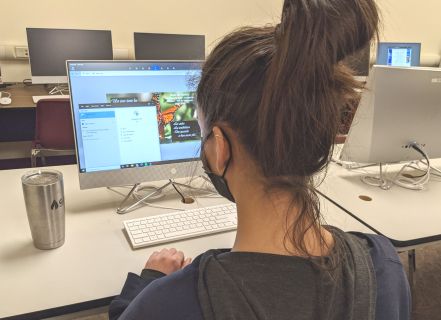
That’s one of the big takeaways from surveys published recently by the Ewing Marion Kauffman Foundation, a nonprofit philanthropy based in Kansas City, Mo. The survey found that 81 percent of students felt that high school got them “very” or “somewhat” ready for college, compared with just 52 percent who felt it prepared them for the workforce.
“People are coming out of this sort of either-or,” said Aaron North, the vice president of education at the Kauffman Foundation. “You’re going to college, or you’re not. You’re getting a job after high school or you’re not. I think that’s not reflective of the reality of what’s on the other side of that graduation stage for them.”
He expects that, in the future, many students will transfer in and out of the workforce, gaining both educational credentials and on-the-job experience.
The survey also found that students and adults in general expect that technology and computer science jobs will be a major growth industry, with 85 percent of adults and 88 percent of students saying they expect those gigs to be in “much” or at least “somewhat more” in demand in the next decade.
And 74 percent of students think they’ll have a job in 20 years that hasn’t been invented yet.
Students “have only grown up in an age of really accelerated tech evolution,” North said. “I think that’s just the world that they are in. It is a world of creation. It is a world of change.”
‘Practical Connection’ Needed
Overwhelmingly, students, parents, and employers surveyed thought high schoolers would be better off learning how to file their taxes than learning about the Pythagorean theorem. At least 82 percent of parents, students, and employers thought schools should focus more on the 1040-EZ form than on that fundamental concept in geometry.
And 81 percent of students said they thought high school should focus most closely on helping students develop real-world skills such as problem-solving and collaboration rather than focusing so much on specific academic-subject-matter expertise.
“I think what that highlights is this idea that there needs to be this practical connection between what and how you are learning when you’re in school and what happens when you’re not in school,” North said. “So that doesn’t mean it has to be directly related to your everyday life, but it does mean that there could be a balance between things that may be applicable to a very narrow number of fields and things that are highly applicable to your life no matter what field you go into or what path you choose.”
Employers are also more likely to rate employees highly if they have completed an internship in their industry and have technical certifications than if they only have a college degree, the survey found.
But at the same time, 56 percent of employers surveyed felt that someone with only a high school degree would be held back from success in life because of their education. Students were even more convinced of the benefits of college, with 63 percent saying that having only a high school education would be a roadblock to success.
Still, most adults—59 percent of those surveyed—said they can’t connect what they learned in high school to their current jobs. That’s especially true of workers in blue-collar jobs, 61 percent of whom say that their jobs weren’t relevant to their high school educations, compared with 52 percent of white-collar employees.
“Parents who have experienced a noncollege pathway understand that those pathways are viable and they can lead to really good options,” North said. “A huge percentage of our population ends up not getting a college degree. And so there are millions and millions of people out there navigating the nondegree world, without much of a road map, the kind of road map we’ve provided around college. So I think that’s reflective of people who have found that and are understanding that, whether it’s for themselves or for their own kids.”
Old Strategies, New Jobs
Similarly, a separate report released last week by the RAND Corp., found that the needs of the workforce have transformed dramatically thanks to technological changes, globalization, and demographic shifts. But K-12 schools, postsecondary institutions, and job-training organizations are preparing students for jobs using essentially the same set of strategies they’ve been relying on for decades.

At the same time, employers are struggling to find workers with so-called “21st-century skills” such as information synthesis, creativity, problem-solving, communication, and teamwork. Yet the path forward is not easy for workers looking to upgrade their skills because of automation or shifting consumer demands.
“Employers are saying they can’t find employees with the skills they need, and on the other end, you have workers whose jobs have been made less relevant,” said Melanie Zaber, an associate economist at RAND, a nonprofit research organization.
The blame shouldn’t be all on schools, the RAND report emphasizes. Employers and education and job-training institutions don’t do a great job of systematically sharing information with schools that would allow them to better prepare students for the changing needs of the workforce. Plus, funding for K-12 education isn’t equally distributed and often neglects the areas that need strong pre-career training the most.
What also makes progress difficult is that high school principals rarely get to see how their students are doing years after they leave the classroom, Zaber said. “Letting high school principals see what happens when students leave their doors can help inform policy for where the gaps are, where the barriers are, where students are being let down,” she said.
Research Supports the Benefits of Arts Education
Research shows that students who engage in the arts at school perform better in math, reading, and writing, and have an enhanced social and emotional experience. Waldorf education integrates an array of arts into the curriculum to support academic growth, develop communication and collaboration skills, and give children a well-rounded, joyful educational journey!
This article was originally written by Brian Kisida and Daniel H. Bowen and published by the Brookings Institution
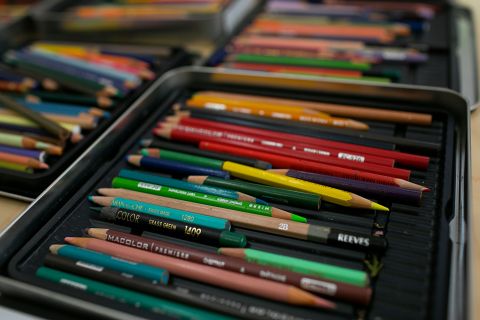
A critical challenge for arts education has been a lack of empirical evidence that demonstrates its educational value. Though few would deny that the arts confer intrinsic benefits, advocating “art for art’s sake” has been insufficient for preserving the arts in schools—despite national surveys showing an overwhelming majority of the public agrees that the arts are a necessary part of a well-rounded education.
Over the last few decades, the proportion of students receiving arts education has shrunk drastically. This trend is primarily attributable to the expansion of standardized-test-based accountability, which has pressured schools to focus resources on tested subjects. As the saying goes, what gets measured gets done. These pressures have disproportionately affected access to the arts in a negative way for students from historically underserved communities. For example, a federal government report found that schools designated under No Child Left Behind as needing improvement and schools with higher percentages of minority students were more likely to experience decreases in time spent on arts education.
We recently conducted the first ever large-scale, randomized controlled trial study of a city’s collective efforts to restore arts education through community partnerships and investments. Building on our previous investigations of the impacts of enriching arts field trip experiences, this study examines the effects of a sustained reinvigoration of schoolwide arts education. Specifically, our study focuses on the initial two years of Houston’s Arts Access Initiative and includes 42 elementary and middle schools with over 10,000 third- through eighth-grade students. Our study was made possible by generous support of the Houston Endowment, the National Endowment for the Arts, and the Spencer Foundation.
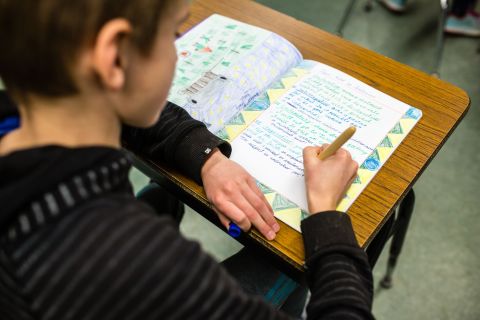
Due to the program’s gradual rollout and oversubscription, we implemented a lottery to randomly assign which schools initially participated. Half of these schools received substantial influxes of funding earmarked to provide students with a vast array of arts educational experiences throughout the school year. Participating schools were required to commit a monetary match to provide arts experiences. Including matched funds from the Houston Endowment, schools in the treatment group had an average of $14.67 annually per student to facilitate and enhance partnerships with arts organizations and institutions. In addition to arts education professional development for school leaders and teachers, students at the 21 treatment schools received, on average, 10 enriching arts educational experiences across dance, music, theater, and visual arts disciplines. Schools partnered with cultural organizations and institutions that provided these arts learning opportunities through before- and after-school programs, field trips, in-school performances from professional artists, and teaching-artist residencies. Principals worked with the Arts Access Initiative director and staff to help guide arts program selections that aligned with their schools’ goals.
Our research efforts were part of a multisector collaboration that united district administrators, cultural organizations and institutions, philanthropists, government officials, and researchers. Collective efforts similar to Houston’s Arts Access Initiative have become increasingly common means for supplementing arts education opportunities through school-community partnerships. Other examples include Boston’s Arts Expansion Initiative, Chicago’s Creative Schools Initiative, and Seattle’s Creative Advantage.
Through our partnership with the Houston Education Research Consortium, we obtained access to student-level demographics, attendance and disciplinary records, and test score achievement, as well as the ability to collect original survey data from all 42 schools on students’ school engagement and social and emotional-related outcomes.
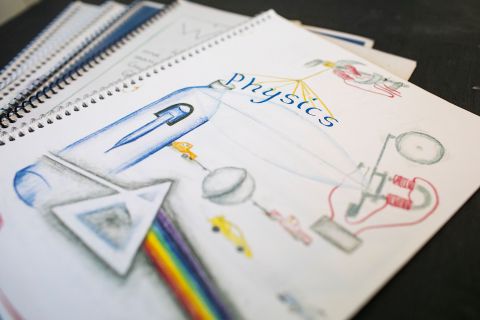
We find that a substantial increase in arts educational experiences has remarkable impacts on students’ academic, social, and emotional outcomes. Relative to students assigned to the control group, treatment school students experienced a 3.6 percentage point reduction in disciplinary infractions, an improvement of 13 percent of a standard deviation in standardized writing scores, and an increase of 8 percent of a standard deviation in their compassion for others. In terms of our measure of compassion for others, students who received more arts education experiences are more interested in how other people feel and more likely to want to help people who are treated badly.
When we restrict our analysis to elementary schools, which comprised 86 percent of the sample and were the primary target of the program, we also find that increases in arts learning positively and significantly affect students’ school engagement, college aspirations, and their inclinations to draw upon works of art as a means for empathizing with others. In terms of school engagement, students in the treatment group were more likely to agree that school work is enjoyable, makes them think about things in new ways, and that their school offers programs, classes, and activities that keep them interested in school. We generally did not find evidence to suggest significant impacts on students’ math, reading, or science achievement, attendance, or our other survey outcomes, which we discuss in our full report.
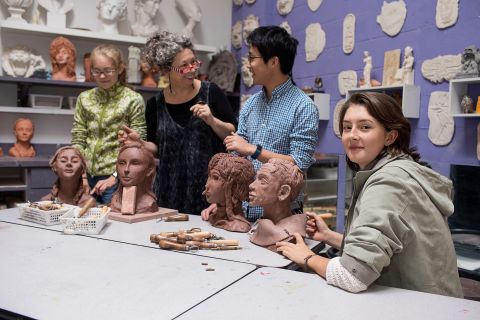
As education policymakers increasingly rely on empirical evidence to guide and justify decisions, advocates struggle to make the case for the preservation and restoration of K-12 arts education. To date, there is a remarkable lack of large-scale experimental studies that investigate the educational impacts of the arts. One problem is that U.S. school systems rarely collect and report basic data that researchers could use to assess students’ access and participation in arts educational programs. Moreover, the most promising outcomes associated with arts education learning objectives extend beyond commonly reported outcomes such as math and reading test scores. There are strong reasons to suspect that engagement in arts education can improve school climate, empower students with a sense of purpose and ownership, and enhance mutual respect for their teachers and peers. Yet, as educators and policymakers have come to recognize the importance of expanding the measures we use to assess educational effectiveness, data measuring social and emotional benefits are not widely collected. Future efforts should continue to expand on the types of measures used to assess educational program and policy effectiveness.
These findings provide strong evidence that arts educational experiences can produce significant positive impacts on academic and social development. Because schools play a pivotal role in cultivating the next generation of citizens and leaders, it is imperative that we reflect on the fundamental purpose of a well-rounded education. This mission is critical in a time of heightened intolerance and pressing threats to our core democratic values. As policymakers begin to collect and value outcome measures beyond test scores, we are likely to further recognize the value of the arts in the fundamental mission of education.
Time in Nature can Spark a Lifetime of Science Curiosity
Being outdoors helps children develop the curiosity that is the essence of science later in life. Time in nature helps students cultivate their independence, imagination and sense of wonder, while helping them feel less stressed and more confident in themselves. That’s one reason why outdoor education and play are core components of Waldorf education.
This article by Jen Rose Smith was originally published on CNN.com
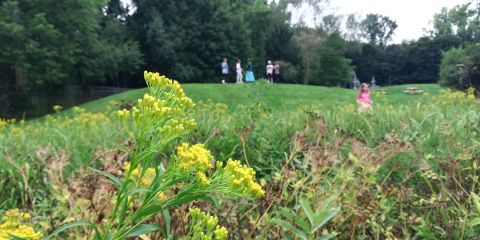
Before she became a famous scientist and inventor, Temple Grandin was a kid who liked to play outside.
“I absolutely loved flying kites,” she said. “We would just make up our own games — go sit in the field and make daisy chains.” All that undirected, childhood play, Grandin believes, amounted to more than goofing off. It was a foundation for her life in the sciences.
Now an animal behavior expert and professor at Colorado State University, Grandin has published more than 60 scientific papers. She is an advocate for people with autism, and in 2010 landed on Time magazine’s annual list of the world’s 100 most influential people.
In her new children’s book “The Outdoor Scientist: The Wonder of Observing the Natural World,” released April 6, she encourages kids to follow her lead into the great outdoors. Time outside, she thinks, helps kindle curiosity that is the essence of science.
“If you are fascinated by clouds or the spots on a ladybug’s back; if you like to split open rocks and see what’s inside, then you’re already an outdoor scientist,” Grandin wrote.
Not enough kids have the opportunities she enjoyed to get dirty, make things and discover their own sense of wonder, she said. “Kids just aren’t outside enough doing it on their own — we need to teach it.”
That’s why she’s asking adults to throw open the doors and send kids outside. Her book, which includes ideas for hands-on projects children can do in nature, joins a chorus of advice from researchers and psychologists who insist kids need outdoor time to thrive.
Here’s why it’s important and how to get started, even if your kid would rather stay on the couch.
How getting outside helps children learn
Until recently, the connection between learning and exposure to nature was poorly understood, wrote Ming Kuo, associate professor of natural resources and environmental sciences at the University of Illinois Urbana-Champaign, in a recent review paper. Everyone thought nature was good for kids, she wrote, but they didn’t have robust research to support the thesis.
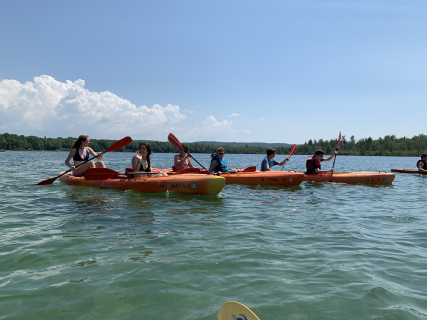
Now, that’s changing. Analyzing dozens of studies, Kuo found strong evidence that exposure to nature promotes attention and relieves stress. It boosts self-discipline and motivation. It’s tied to physical fitness, and also increases kids’ autonomy. The positive effect doesn’t require trips to faraway places, the research found. Just adding green spaces and trees to urban schools makes a real difference. Exploring natural areas outside of school can really help, though, whether it’s a trip to a city park or time in the closest patch of woods.
“Children are able to be more imaginative and engage in more pretend play when they’re in unstructured nature play areas,” said Kylie Dankiw, a researcher at the University of South Australia and author of a 2020 review paper on the benefits of playing outside.
Kids playing in natural areas engaged in more of what Dankiw called “cognitive play,” where they use their imaginations to create their own games. “Imaginative play is really important for developing social skills, interacting with other people and problem solving,” she said.
Playing in the dirt could lead to making scientific breakthroughs
What should kids do with all that outside time? It can be as simple as laying around in the grass, finding the beauty in insects, plants and clouds. “Just playing freely in and with nature,” Dankiw said, “where the child chooses what they want to do and how they want to play.” Outdoor time, in other words, doesn’t need to be structured.
If you want to offer your kid some inspiration, however, Grandin’s book includes 40 child-friendly projects, some that engage young readers with scientific principles. Kids
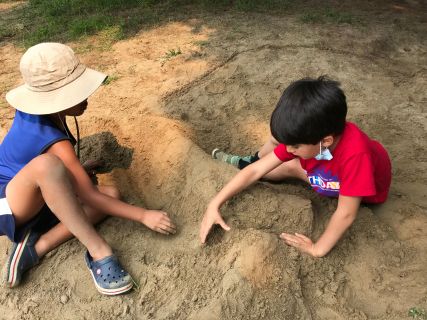
can make a model rocket powered by baking soda, for example, or craft a pine cone bird feeder to hang from nearby trees or an apartment window.
You never know where the project might lead. Many scientists, Grandin wrote, have followed their childhood interests to a life of discovery, and she shares some of their stories in the book.
As a child in 19th-century England, Mary Anning joined her siblings to collect seashells near the cliffs of Lyme Regis. That’s where, at 12 years old, she helped uncover the first complete Ichthyosaurus skeleton. The momentous find led to a life in paleontology.
In the United States, a young B.F. Skinner spent his childhood in the woods around his Pennsylvania home, fascinated by the antics of birds, butterflies and chipmunks. After years of study, Skinner’s childhood interests would transform the field of animal behavior.
It’s not that they knew, as children, that their interests would endure a lifetime. Grandin didn’t, either. “I also had no idea that all the stuff I loved doing as a kid would come to inform my life’s work,” Grandin wrote. “I had no idea what I wanted to be when I grew up.” For Grandin and other scientists, though, playing outdoors turned out to be a life-changing opportunity.
Getting your child out the door
Of course, not all kids actually want to go outside. With the right approach, though, psychologist Mary Alvord of Rockville, Maryland, said parents can do a lot to encourage positive experiences in the natural world.
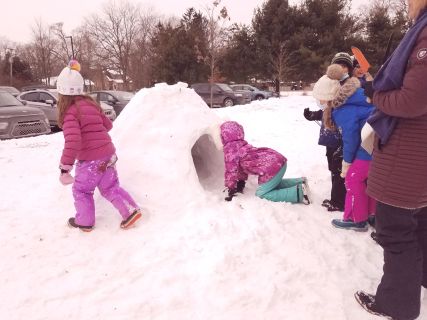
It helps to make it part of your family’s routine. “When my kids were young, they would come home from school, have a snack, then it was like: ‘All right, you have to go outside and play before you start anything else,’” she said. “From the start, it’s about setting the expectation that there is outdoors time.”
If that isn’t already on the family schedule, Alvord suggested parents be open and honest about wanting to make a change. Call a family meeting and make it a conversation, she said.
“Say, ‘We want to start putting in outdoor time — what would you like to do outside? What are some things we could do either as a family, or you could do by yourself, or with a sibling or with friends?’”
When introducing more time outdoors, Alvord said parents may have to do some reframing to get kids on board.
“The frame is: How can you make it appealing and fun?” she said. If it’s cold and rainy outside, that might mean presenting the day as a chance to jump in puddles or look for frogs. Every season, Alvord said, brings changes that can engage children’s curiosity.
If your child says she doesn’t want to go out because she’s doing something else, Alvord suggested giving her a chance to wind down. “Say, ‘Our outdoors time starts in 15 minutes,’” she said, so they can finish a game or wrap up another activity.
Parents’ attitudes count for a lot, Alvord said, which may mean getting out of your own comfort zone even as you’re encouraging your child to head outdoors. Try rethinking your attitude toward “bad” weather or getting dirty, for example. And if you’re hoping to nurture your child’s sense of wonder at the natural world, it could help to reconnect with your own, whether you’re watching the stars, going for a hike or just feeding birds in a nearby park.
“It’s not ‘do as I say,’ it’s ‘do as I do,’” she said. “Kids learn from us by seeing what we do.”

Check this for more information !, Rajawali888 ,
If you are looking for the best games in Southeast Asia, Rajawali888 or Rajawali888, or this Rajawali888 it will be more interesting